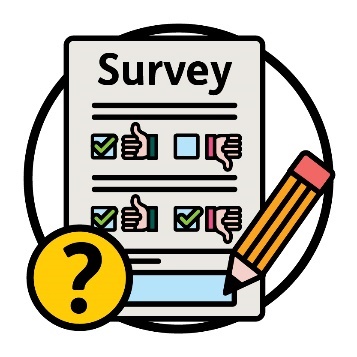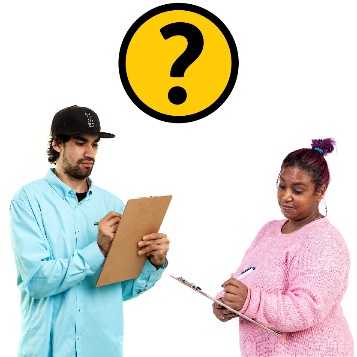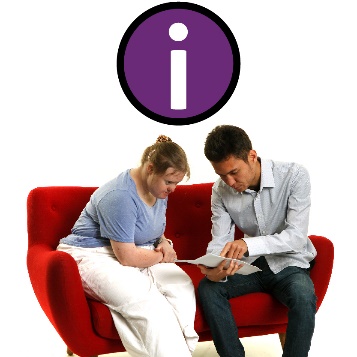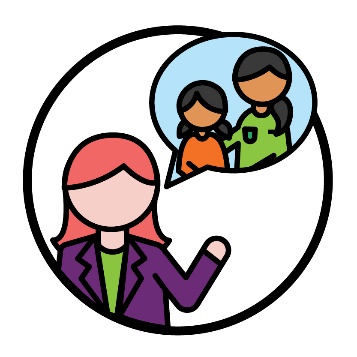Important updates
Participant Service Charter
| The NDIA gave us an update about the Participant Service Charter. |
| The Participant Service Charter is a document about:
|
| Council Members shared some ideas about the Participant Service Charter. |
| Council Members explained how the NDIA should share information about how the Participant Service Charter works. |
| They explained the NDIA should share this information in ways that are easy to understand. For example, in plain English. |
Council Members shared the NDIA should include information about: | |
|
|
|
|
| You can be different in more than one way. And people might treat you differently for each part of who you are. We call this intersectionality. |
| This information will help the NDIA know if things are changing. |
Council Members explained that the NDIA should look at information about: | |
|
|
|
|
| This will help the NDIA understand where participants need more services. |
| Council Members explained that some people with intellectual disability want to do surveys in person. |
| An intellectual disability affects how you:
|
| Council Members shared that the community wants to know who fills out NDIS surveys. |
| People want to know if people with disability fill out the surveys. Or if their families fill it out for them. |
| Council Members want the NDIA to work with participants to explain what they do with their information. |
How the NDIA uses our advice
| The NDIA explained how they are using our advice about ‘Promoting best practice in early childhood intervention’. |
| You can read our advice on our website. www.ndis-iac.com.au/s/Promoting-best-practice-in-ECI-in-the-NDIS-March-2020.pdf |
| But the NDIA aren’t using all of our advice. |
| Council Members shared some ideas about what they can do. |
Council Members shared how the NDIA can find out if their supports are working through how many young children: | |
|
|
|
|
Council Members explained that the NDIA should support parents to: | |
|
|
|
|
|
|
| Council Members shared how the NDIA should look at how the NDIS works with services that protect children. |
This includes: | |
|
|
|
|
| They want to make sure every young child with disability gets support. |
The NDIS review
| The Australian Government will review the NDIS. |
When the Australian Government reviews the NDIS, they check to see what: | |
|
|
|
|
Council Members talked about: | |
|
|
|
|
| Council Members explained the NDIS review should make its reports clear. |
| And include how they work with the Disability Royal Commission. |
| The Disability Royal Commission is a way to look into the experiences of people with disability. |
Council Members think the NDIS review should think about our: | |
|
|
|
|
|
|
The NDIS review should also: | |
|
|
|
|
Important updates
Participant Service Charter
| The NDIA gave us an update about the Participant Service Charter. |
| The Participant Service Charter is a document about:
|
| Council Members shared some ideas about the Participant Service Charter. |
| Council Members explained how the NDIA should share information about how the Participant Service Charter works. |
| They explained the NDIA should share this information in ways that are easy to understand. For example, in plain English. |
Council Members shared the NDIA should include information about: | |
|
|
|
|
| You can be different in more than one way. And people might treat you differently for each part of who you are. We call this intersectionality. |
| This information will help the NDIA know if things are changing. |
Council Members explained that the NDIA should look at information about: | |
|
|
|
|
| This will help the NDIA understand where participants need more services. |
| Council Members explained that some people with intellectual disability want to do surveys in person. |
| An intellectual disability affects how you:
|
| Council Members shared that the community wants to know who fills out NDIS surveys. |
| People want to know if people with disability fill out the surveys. Or if their families fill it out for them. |
| Council Members want the NDIA to work with participants to explain what they do with their information. |
How the NDIA uses our advice
| The NDIA explained how they are using our advice about ‘Promoting best practice in early childhood intervention’. |
| You can read our advice on our website. www.ndis-iac.com.au/s/Promoting-best-practice-in-ECI-in-the-NDIS-March-2020.pdf |
| But the NDIA aren’t using all of our advice. |
| Council Members shared some ideas about what they can do. |
Council Members shared how the NDIA can find out if their supports are working through how many young children: | |
|
|
|
|
Council Members explained that the NDIA should support parents to: | |
|
|
|
|
|
|
| Council Members shared how the NDIA should look at how the NDIS works with services that protect children. |
This includes: | |
|
|
|
|
| They want to make sure every young child with disability gets support. |
The NDIS review
| The Australian Government will review the NDIS. |
When the Australian Government reviews the NDIS, they check to see what: | |
|
|
|
|
Council Members talked about: | |
|
|
|
|
| Council Members explained the NDIS review should make its reports clear. |
| And include how they work with the Disability Royal Commission. |
| The Disability Royal Commission is a way to look into the experiences of people with disability. |
Council Members think the NDIS review should think about our: | |
|
|
|
|
|
|
The NDIS review should also: | |
|
|
|
|










































